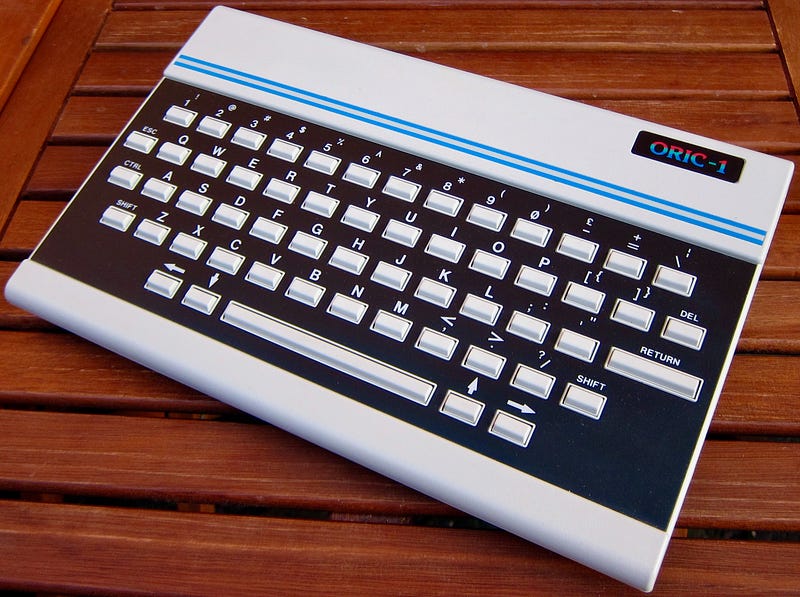Nostalgic Reflections on the Oric-1: A 1980s Rival to the ZX Spectrum
Written on
Chapter 1: The Competitive Landscape
The Oric-1 emerged as a formidable challenger to the Sinclair ZX Spectrum, both debuting in 1982 and offering options of 16 or 48 KB of RAM. Their pricing was comparable, yet the software library for the Spectrum far surpassed that of the Oric.
In my high school days, many students owned either a ZX Spectrum or an Oric-1, with a few opting for alternatives like the BBC Micro or VIC-20. Upon discovering the Oric's advanced audio capabilities, I regretted my choice of the Spectrum, always yearning to experience the Oric firsthand—a desire that remained unfulfilled at the time. My curiosity was also piqued by the Oric's 1 MHz 6502 microprocessor, contrasting with the Z80 in the Spectrum. I would later delve deeper into the 6502 when I acquired a Commodore 64.

Section 1.1: A Long-Awaited Reunion
Fast forward 15 to 20 years, and I finally got my hands on an Oric-1, a gift from my wife. The excitement was palpable as I placed the ZX Spectrum and Oric side by side, noting the Oric's noticeably larger size.
The Oric's chiclet keyboard felt quite different from the rubber one on the Spectrum, featuring small plastic keys that provided a distinct feel. However, typing on either machine left much to be desired. The later Oric Atmos model improved upon this with a proper keyboard, as did later Spectrum iterations.
Section 1.2: Audio Capabilities
The Oric's built-in BASIC programming language offered excellent support for its 4-channel sound chip, including commands like SOUND, MUSIC, and PLAY. It also featured predefined sound effects for games, such as EXPLODE, PING, SHOOT, and ZAP. These commands simplified programming for beginners, especially when compared to the rudimentary BASIC of the Commodore 64, albeit the 64 was capable of richer sounds.
Chapter 2: Visual Performance
The video showcases 10 amazing facts about the Oric-1 and Atmos, highlighting their unique features and historical significance.
Graphics on the Oric bore resemblance to those of the Spectrum, both supporting eight colors and offering BASIC commands for drawing shapes like lines and circles. However, users had to choose between LORES for text or HIRES for graphics. In text mode, character redefinition allowed for some graphic capabilities, while the Oric's HIRES mode boasted superior vertical color resolution.
Section 2.1: Early Challenges
The Oric-1 faced initial challenges, including bugs within its ROM and difficulties in loading software from cassette tapes. Despite these setbacks, it found a reasonable level of success in the UK, though it ultimately could not eclipse the Spectrum's popularity. Perhaps a quicker resolution to the ROM issues could have changed its fate.
This video offers a first listen to the Oric-1, revealing its audio capabilities and design features that made it unique.
Conclusion: A Fond Rivalry
In hindsight, I believe the Oric-1 was a worthy competitor to the ZX Spectrum, and I cherish owning one after so many years. However, I might hesitate to admit this at a school reunion! What are your memories of the Oric-1? Feel free to share in the comments below.

If you enjoyed this narrative, you might also appreciate other stories from this series:
Vintage Computers
Exploring microcomputers from the 70s and 80s that left a lasting impression on me.
External Links
- Story of the Oric-1 (The Register)
- Oric (Wikipedia)
Note: This is an updated version of an article I originally published in 2018 and 2020 on two now-defunct blogs.